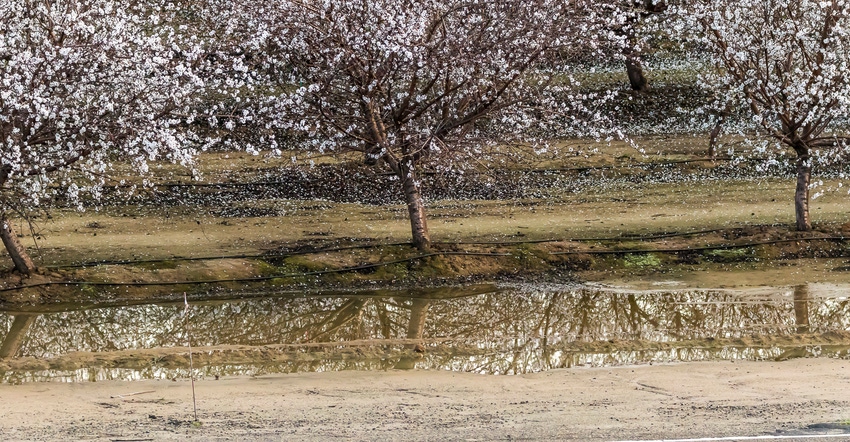
Poor weather during the late-winter almond bloom is being blamed for what the U.S. Department of Agriculture says will be a smaller nut crop this year.
The USDA’s statistical count of almonds across the state suggests growers will harvest 2.2 billion pounds this year, 3.5 percent lower than last year’s figure. This is made more significant by a 7.3 percent increase in bearing acres over the period and an increased tree count per acre.
“We’ve had two winters in a row with freezing temperatures during the bloom period,” said Donny Hicks, a field representative for Hughson Nut Company, an almond processor located near Modesto, Calif. “Overall we had a bad pollination period this year.”
The USDA numbers suggest just that. Average nut set in the Nonpareil variety is down 10 percent with overall nut set across all varieties off nearly 18 percent. The average kernel weight of nuts sampled remained unchanged from last year, according to the USDA report.
Hicks said that some areas of the state fared a little better than others during pollination. Areas on the east side of the Sacramento Valley, such as Chico, generally had fewer bee flight hours due to weather conditions while those on the southwest side of the Sacramento Valley – Maxwell and Woodland – seemed to have warmer conditions and better pollination.
Ditto the San Joaquin Valley as orchards in the far south were not as impacted by cool weather as those in the northern San Joaquin Valley were, Hicks said.
Hull split seems to be a week to 10 days behind last year as well, according to Hicks, suggesting that harvest timing may also be a little later as well.
By the numbers
Nut set in the San Joaquin Valley averaged just over 4,700 per tree, compared to just over 4,400 in the Sacramento Valley. This is off 12 percent in the north and over 18 percent in the south.
Yields are expected to average less than 1,900 pounds per acre this season, down from nearly 2,100 pounds per acre last year.
Orchard density continues to increase: up three trees to 122 per acre this season over last year’s average. This compares to 97 trees per acre 20 years ago.
“While the industry experienced less than ideal weather conditions this spring, California remains the best place in the world to grow almonds,” said Holly King, a Kern County almond farmer and chairwoman of the Almond Board of California.
The annual USDA almond measurement report surveyed 817 orchards, 4 percent fewer orchards than were sampled last year.
The USDA suggests a confidence level of 80 percent in its survey, suggesting that the annual almond crop will yield between 2.05 billion and 2.35 billion pounds of nuts this year.
California produced a record 2.28 billion pounds of almonds on 1.09 million acres last year at an average price of $2.44 per pound to the grower.
About the Author(s)
You May Also Like






